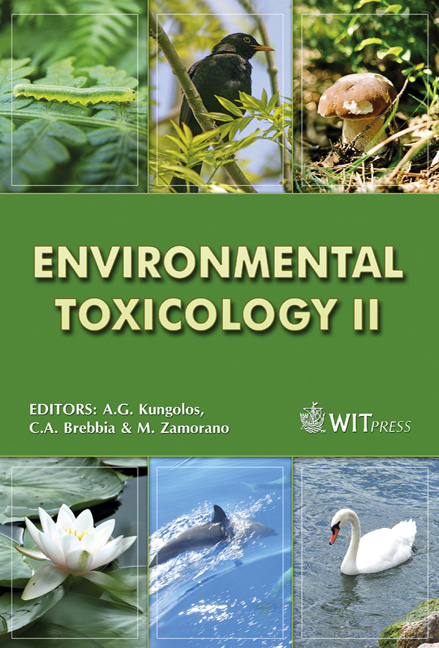Role Of The Chemistry Of Soil Organic Matter On The Sorption Of Diuron
Price
Free (open access)
Transaction
Volume
110
Pages
10
Page Range
327 - 336
Published
2008
Size
336 kb
Paper DOI
10.2495/ETOX080341
Copyright
WIT Press
Author(s)
A. G. Ahangar, R. J. Smernik & R. S. Kookana
Abstract
The influence of organic matter chemistry on the sorption of diuron to soils collected from a small (2 ha) field was investigated. Organic carbon-normalized sorption coefficients (KOC), determined by batch sorption, varied between 405 and 598 Lkg-1 amongst 10 A11 horizons, and between 547 and 975 Lkg-1 amongst 10 matching A12 horizons. In all cases KOC was greater for the A12 horizon than the corresponding A11 horizon by 27–81%. Organic matter chemistry of the A11 and A12 horizons was determined using solid-state 13C nuclear magnetic resonance (NMR) spectroscopy. KOC was positively correlated with aryl C (r2 = 0.61, significance level 0.001) and negatively correlated with O-alkyl C (r2 = 0.88, significance level <0.001) as a single factor and as a combination of both we also propose A index (r2 = 0.65, significance level 0.001). Little change in soil mineralogy across a very small field led to diminished organic matter and clay mineral interactions, allowing the effect of organic matter chemistry on KOC to be clearly seen. Keywords: sorption, diuron, NMR spectroscopy. 1 Introduction Diuron, N- (3,4-dichlorophenyl)-N, N-dimethyl-urea, is one of the phenyl amide family and belongs to the subclass of phenyl urea. Diuron is a toxic and slightly hazardous type III pesticide on the basis of the EPA (Environmental Protection Agency, USA) and is considered as a priority hazardous substance (PHS) by the European Commission.Keywords
sorption, diuron, NMR spectroscopy.





